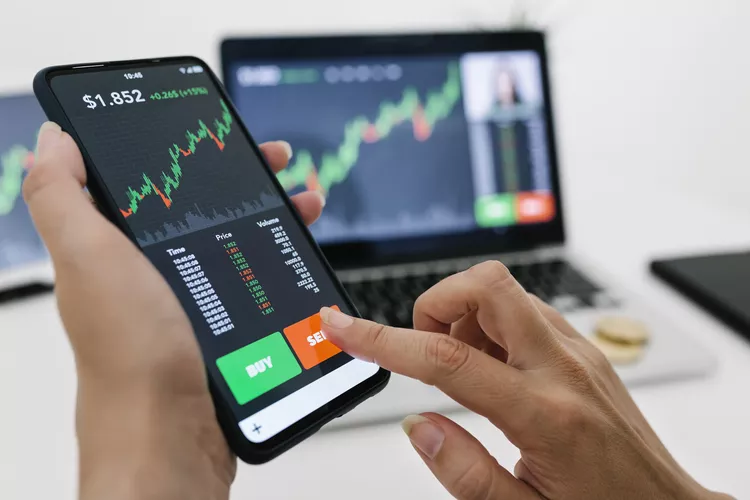How Does Bitcoin Mining Work?

Bitcoin Mining is the process by which new bitcoins re entered into circulation. It is also the way the network confirms new transactions and is a critical component of the blockchain ledger’s maintenance and development. “Mining” is performed using sophisticated hardware that solves an extremely complex computational math problem. The first computer to find the solution to the problem receives the next block of bitcoins and the process begins again.
Cryptocurrency mining is painstaking, costly, and only sporadically rewarding. Nonetheless, mining has a magnetic appeal for many investors who are interested in cryptocurrency because of the fact that miners receive rewards for their work with crypto tokens. This may be because entrepreneurial types see mining as pennies from heaven, like California gold prospectors in 1849. And if you are technologically inclined, why not do it?
The bitcoin reward that miners receive is an incentive that motivates people to assist in the primary purpose of mining: to legitimize and monitor Bitcoin transactions, ensuring their validity. Because many users all over the world share these responsibilities, Bitcoin is a “decentralized” cryptocurrency, or one that does not rely on any central authority like a central bank or government to oversee its regulation.
- By mining, you can earn cryptocurrency without having to put down money for it.
- Bitcoin miners receive bitcoin as a reward for completing “blocks” of verified transactions, which are added to the blockchain.
- Mining rewards are paid to the miner who discovers a solution to a complex hashing puzzle first, and the probability that a participant will be the one to discover the solution is related to the portion of the network’s total mining power.
- You need either a graphics processing unit (GPU) or an application-specific integrated circuit (ASIC) in order to set up a mining rig.
Why Bitcoin Needs Miners
Blockchain “mining” is a metaphor for the computational work that nodes in the network undertake in hopes of earning new tokens. In reality, miners are essentially getting paid for their work as auditors. They are doing the work of verifying the legitimacy of Bitcoin transactions. This convention is meant to keep Bitcoin users honest and was conceived by Bitcoin’s founder, Satoshi Nakamoto. Double spending is a scenario in which a Bitcoin owner illicitly spends the same bitcoin twice. With physical currency, this isn’t an issue: When you hand someone a $20 bill to buy a bottle of vodka, you no longer have it, so there’s no danger you could use that same $20 bill to buy lotto tickets next door. Though counterfeit cash is possible, it is not exactly the same as literally spending the same dollar twice. With digital currency, however, as the Investment Times dictionary explains, “there is a risk that the holder could make a copy of the digital token and send it to a merchant or another party while retaining the original.”
Let’s say you had one legitimate $20 bill and one counterfeit of that same $20. If you were to try to spend both the real bill and the fake one, someone who took the trouble of looking at both of the bills’ serial numbers would see that they were the same number, and thus one of them had to be false. What a blockchain miner does is analogous to that—they check transactions to make sure that users have not illegitimately tried to spend the same bitcoin twice. This isn’t a perfect analogy—we’ll explain in more detail below.
Why Mine Bitcoin?
In addition to lining the pockets of miners and supporting the Bitcoin ecosystem, mining serves another vital purpose: It is the only way to release new cryptocurrency into circulation. In other words, miners are basically “minting” currency. For example, as of March 2022, there were just under 19 million bitcoins in circulation, out of a total of 21 million.
Aside from the coins minted via the genesis block (the very first block, which founder Satoshi Nakamoto created), every single one of those bitcoins came into being because of miners. In the absence of miners, Bitcoin as a network would still exist and be usable, but there would never be any additional bitcoin. However, because the rate of bitcoin “mined” is reduced over time, the final bitcoin won’t be circulated until around the year 2140. This does not mean that transactions will cease to be verified. Miners will continue to verify transactions and will be paid fees for doing so in order to keep the integrity of Bitcoin’s network.
To earn new bitcoins, you need to be the first miner to arrive at the right answer, or closest answer, to a numeric problem. This process is also known as Proof of Work (PoW).To begin mining is to start engaging in this proof-of-work activity to find the answer to the puzzle.
No advanced math or computation is really involved. You may have heard that miners are solving difficult mathematical problems—that’s true but not because the math itself is hard. What they’re actually doing is trying to be the first miner to come up with a 64-digit hexadecimal number that is less than or equal to the target hash. It’s basically guesswork.
o it is a matter of randomness, but with the total number of possible guesses for each of these problems numbering in the trillions, it’s incredibly arduous work. And the number of possible solutions only increases with each miner that joins the mining network. In order to solve a problem first, miners need a lot of computing power. To mine successfully, you need to have a high “hash rate,” which is measured in terms gigahashes per second (GH/s) and terahashes per second (TH/s).
Aside from the short-term payoff of newly minted bitcoins, being a coin miner can also give you “voting” power when changes are proposed in the Bitcoin network protocol. This is known as a Bitcoin Improvement Protocol (BIP). In other words, miners have some degree of influence on the decision-making process for matters such as forking.The more hash power you possess, the more votes you have to cast for such initiatives.
How Much a Miner Earns
The rewards for Bitcoin mining are reduced by half roughly every four years.When bitcoin was first mined in 2009, mining one block would earn you 50 BTC. In 2012, this was halved to 25 BTC. By 2016, this was halved again to 12.5 BTC. On May 11, 2020, the reward halved again to 6.25 BTC.As of March 2022, the price of Bitcoin was around $39,000 per bitcoin, which means you’d have earned $243,750 (6.25 x 39,000) for completing a block.4 Not a bad incentive to solve that complex hash problem detailed above, it might seem.






